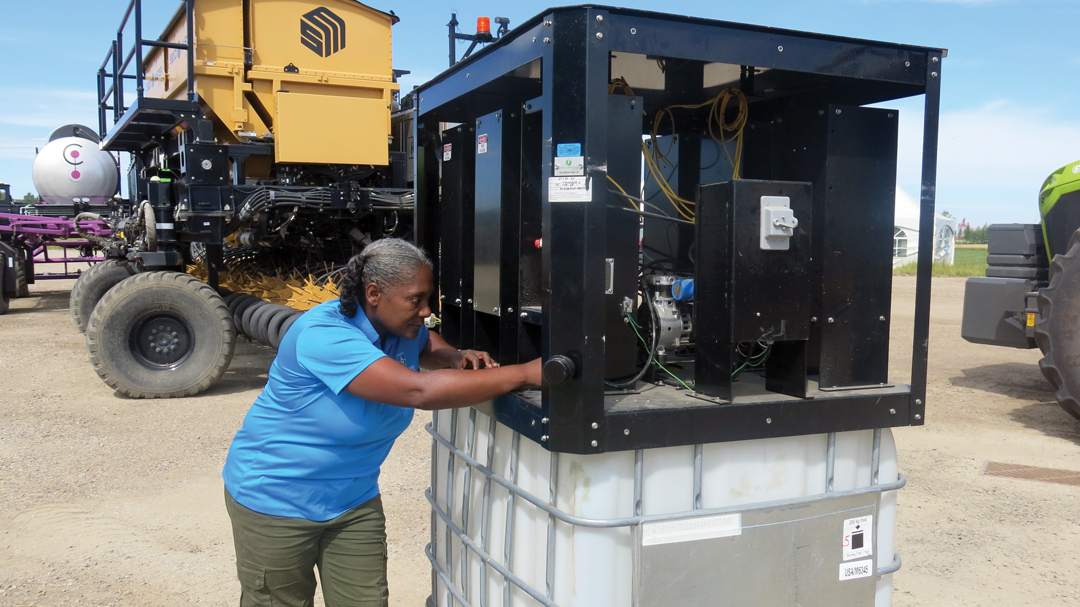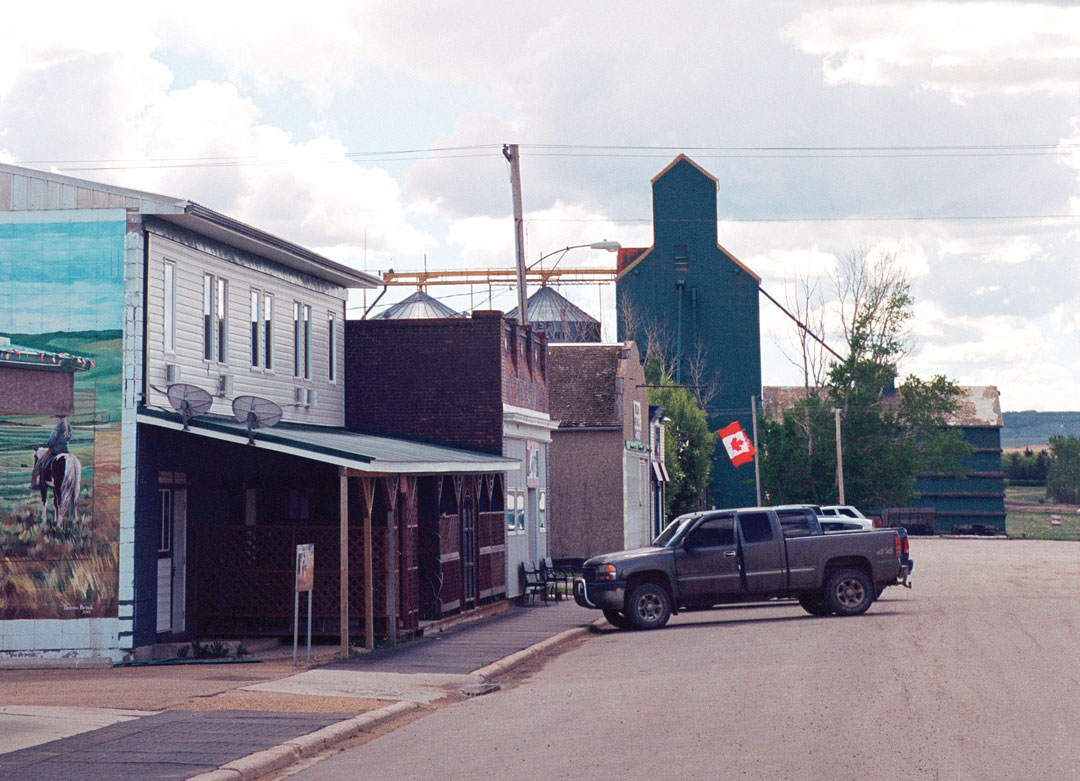JUST LIKE LIGHTNING
BY DOUG FERGUSON • PHOTO COURTESY OF OLDS COLLEGE
Olds College of Agriculture and Technology is assessing a machine that mimics lightning to create crop nutrients. The Thunder 365 allows farmers to make their own salt-free liquid fertilizer literally out of thin air. “The cost of fertilizers like urea and anhydrous ammonia has been extremely volatile, with prices peaking at historic highs in recent years,” said Angie Stoute, a research technician at Olds College. “If there’s a way to get that cost down, that’s a great thing.”
Developed by U.S. company Green Lightning Solutions, the machine uses plasma arc reactors to split nitrogen molecules in the air, which mimics the chemical reaction that occurs between lightning and rain. The freed nitrogen is combined with oxygen and hydrogen from water to primarily form nitrate ions. This creates a liquid fertilizer that can be stored in a tank. It can be applied as a foliar spray or at seeding to improve efficiency and reduce waste. “You can make as much fertilizer as you need right on your farm,” said R.J. Grieve of Nytro Ag Corp., the Canadian distributor. “Air contains about 78 per cent nitrogen, so all we’re doing is using what’s already there. The fact that it’s more environmentally sustainable is a nice byproduct.”
Olds College is studying nitrogen uptake from fertilizer produced by the unit at its Smart Farm, a high-tech, living laboratory for agricultural research. The three-year project involves 48 crop plots and a rotation of wheat, barley and canola. Olds College has the tools to prove the practicality of the technology to Prairie farmers, said Grieve. “The machines are in their infancy as far as being available to the public, so we hope to have irrefutable data about what is actually occurring in the field.”
Although synthetic fertilizer has long been a cornerstone of Prairie farming, the expense of feedstock such as natural gas has risen sharply. These fertilizers also contain salts that must be broken down by soil microbes, a process that can produce N2O, a greenhouse gas up to 273 times more potent than CO2. To curtail such emissions lines up with the federal government’s aim to reduce fertilizer-related emissions by 30 per cent by 2030. Salt buildup in soils can also harm beneficial microbes and impede a crop’s ability to absorb water and nutrients. Green Lightning’s eco-friendliness earned it an environmental sustainability award at this year’s Ag in Motion farm expo.
This technology cannot use untreated water from sources such as dugouts. It must be pre-treated to meet specifications for potable water and hardness. Electricity may potentially be provided by solar panels to further reduce cost, said Grieve. “If you ran a machine over the course of a year, you’re looking at far less electricity than if you ran your toaster for the same amount of time.”
Nytro Ag sells units of various sizes. The focus of research at Olds College, the Thunder 365 has a 12.25 sq. ft base, stands six feet tall and costs about $67,000. It produces approximately 378 litres of fertilizer daily. Grieve calculates a farmer could pay off the cost of the machine in under a year with the savings from not buying conventional fertilizers. Additional models include a 10-foot container priced at about $305,000 that has five times the capacity of the Thunder 365.
Although the concept has existed since the 19th century, it is only now becoming a practical reality, said Grieve. “We’re definitely getting interest from all across Canada.”
Doug Ferguson is Olds College’s communications lead.







Comments